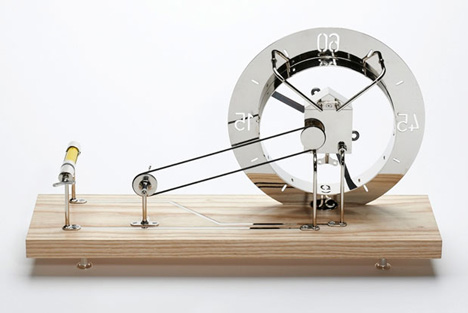2023年10月29日 星期日
week 9. humanistic HCI
專家主觀性 expert subjectivity
1. HCI reaches out.
"Key examples include the rise of aesthetics as an approach to user experience design [2]; the introduction of “reflective HCI” [3] to reposition the field with a more self-critical stance; as well as the use of feminist [4], queer [5], and postcolonial [6] approaches to emancipatory computing."
2. The humanities reach in.
" As alternatives, Winograd and Flores introduced Heideggerian phenomenology, biological accounts of cognition and language, and speech act theory to HCI. Offering an epistemological critique of the field as a whole and introducing an alternative epistemological stance are philosophical activities. It is easy to see that Winograd and Flores’s seminal work was in fact humanistic HCI, even if no one at that time was using the term."
3. What is Humanistic HCI?
". It is not the same as digital humanities, which is humanistic research supported by digital technologies, and which is by and large practiced by humanistic scholars (see, e.g., [9])."
"Humanistic HCI operates in the opposite direction: It is HCI research and practice that is supported by humanistic practices, theories, and methods."
4. History and tradition
"Many HCI systems are presented with little to no reference to their own historical genealogies, and the field itself has no significant histories beyond a generally shared sense that HCI has had three paradigms or waves [13,14]."
" Our expectation is that interaction design and/or HCI (whatever their relation is or will become, exactly) will develop much more of a historical sensibility in the coming decade."
5. Conceptual analysis
" During its rise in the 19th century, science began to displace philosophy as the knowledge discipline best able to account for the world. What was philosophy’s role in a scientific era? One answer was that philosophy ceased to provide doctrines and instead became an activity directed at the clarification of thoughts. As the early Ludwig Wittgenstein wrote, “The object of philosophy is the logical clarification of thoughts. Philosophy is not a theory but an activity. A philosophical work consists essentially of elucidations” [15]. Philosophy was thus moving away from producing original systems and toward the disciplined analysis of the concepts we think with."
Summary:
" overall humanistic dispositions: the attempt to take on a situation or work that is in some sense confusing; to do so holistically (rather than analyzed and operationalized into well-defined parts); to bring clarity to it; and to do so in a way that orients itself toward emancipatory change (diversely defined)."
Humanistic HCI Practices and Methods
1. Excursus: The expert subject.
2. Interaction criticism.
3. Critical discourse analysis.
" HCI examples of such critiques include studies of cultural probes [25], affective computing [26], and sustainable making [27]."
4. Critical social science
5. Design futuring.
"These strategies are commonly deployed in speculative design, critical design, design fictions, and science and utopian fiction"
6. Emancipatory HCI.
2023年10月15日 星期日
week 7. Hertzian Tales (chap 3)
泛功能 - 赫茲故事第三章
The prefix “para-” suggests that such design is
within the realms of utility but attempts to go beyond conventional definitions
of functionalism to include the poetic.
泛功能(超越功能)超越傳統定義,包含了詩意。
Eccentric Objects: Para-functionality and Non-design
Some naive, curious, or eccentric objects, outside the world of conventional design,
unintentionally embody provocative or poetic qualities that most product
designs, even those intended to provoke, seldom achieve.
某些天真的、好奇的、古怪的物件,落在傳統設計之外,它們偶然地賦予了挑臖的和詩意的品質,是多數產品設計即使刻意追求也很少達成的。
This is also the case with “Chindogu”. Their individual
elements are recognizable, but the reason for combining them is at first bewildering.
The meaning behind the object is derived from “sense-fiction”: the objects
make functional sense, but are still useless.
Forbidden Emotions: Para-functionality and Design
In a field where “product design is thoroughly integrated in capitalist production, [and] bereft of an independent critical tradition on which to base an alternative,” only a few
designers use the function of products as criticism.
在產品設計完全整合在資本主義產製的領域,失去了獨立批判的傳統,只有一些設計師使用產品功能作為批判。
...what Baudrillard has called the “crisis of functionalism.”
Baudrillard (1981) argues that the acceptance of functionalism as an arbitrary
but dominant rationality gave rise to an irrational counter-discourse that
moves between the two poles of kitsch (庸俗作品) and surrealism:
The surrealist object emerges at the same epoch as the functional object, as its derision (嘲笑)
and transgression. Although they are overtly dys- or para-functional, these phantasmic (幻想的)
objects nevertheless presuppose—albeit in a contradictory sense—the advent of functionality
as the universal moral law of the object, and the advent of this object itself, separated,
autonomous and dedicated to the transparency of its function. When one ponders
it, there is something unreal and almost surreal in the fact of reducing an object to its
function: and it suffices to push this principle of functionality to the limit to make its
absurdity emerge. This is evident in the case of the toaster, iron or “undiscoverable objects”
of Carelman. (192–193)
Jacques Carelman's Impossible Objects
Catalogue of Extraordinary Objects
2023年10月1日 星期日
week 5. Hertzian Tales (chap 2)
非人因 - 赫茲故事第二章
User-Friendliness
Transparency
(In)human Factors
人被奴役化,嚴格來說,並不是被機器,也不是被建造和擁有機器的人,而是被機器所賦予的概念模型、價值、以及思想系統。
"This enslavement is not, strictly speaking, to machines, nor to the people who build and own them, but to the conceptual models, values, and systems of thought the machines embody." p.21
藉由詩意化人與電子物件間的距離,或許能促進敏銳的懷疑態度,而非不經思考的吸收電子物件所嵌入的價值與概念模型。
"By poeticizing the distance between people and electronic objects, sensitive skepticism might be encourage, rather than unthinking assimilation of the values and conceptual models embedded in electronic objects." p. 22
透過疏遠與異化,詩意化人與電子物件間的距離,將互動性置於透明與不透明之間,寵物與異形之間,散文與詩歌之間。
"This chapter looks at "poeticizing" the distance between people and electronic objects through "estrangement" and alienation," locating interactivity between transparency and opaqueness, the pet and the alien, prose and poetry." p. 22
Robinson 認為 Norman 的取徑產生了沒有混淆、不會令人失望的產品 (這很明顯是不夠的)。...... 吊詭的是,以使用者為中心,不只是要釐清人們如何描繪事物,而是絕對需要認清: 人們所互動的設計物,對我們如何思考,有巨大的影響。"
"Robinson argues that Norman's approach results in products that will not confuse or disappoint (which is clearly not enough). ... Paradoxically, user-centredness is not just figuring out how people map things, it absolutely requires recognising that the artefacts people interact with have enormous impact on how we think." p. 23
在人因的世界中,物件似乎必須被理解,而非被詮釋。......在人因社群中,將人與科技的關係簡化為認知的清晰程度...
"In the human factors world, objects, it seems, must be understood rather than interpreted. ... The reduction of the relationship between people and technology to a level of cognitive clarity by the human factors community..." p. 23
日常語言通常是資訊性的與工具性的; 如果資訊被成功的傳遞,或是行動被成功的挑起,這些字詞可以被視為
"透明的"。伴隨詩意功能而來的是某種不透明,因為作者既不傳遞資訊,也不尋求挑起行動。這可能帶來一種刻意的模糊。
"Everyday language is usually informative and instrumental;...since if a piece of information has been successfully passed or some action successfully instigated, the words by which this has been managed can count as "transparent." With the poetic function comes a certain opacity, for the writer is no longer passing information nor seeking to instigate action. There may also come an intentional ambiguity." p. 35
"The poetic function of language has as its effect that when we read literature we become
more aware of language than we are when we are confronted by language in its other
functions. To introduce another term dear to the formalists, in literature language is
“foregrounded. ... In the everyday use of language it will seldom be practical and may even be found impolite to “foreground” language.”"
根據 Viktor Shlkovsky,詩意藝術的功能,是對抗感知的慣例模式所支持的熟悉化。
"According to Viktor Shklovsky,..., the function of poetic art is to counter-act the familiarization encouraged by routine modes of perception." p. 35

fan heater by Winfried Scheuer
為了提供環境讓使用者反思電子物件的日常生活經驗,我們必須超越"根植於視覺的形的陌異",進而探索"根植於功能性的使用美學"...
"To provide conditions where users can be provoked to reflect on their everyday experience of electronic objects, it is necessary to go beyond forms of estrangement grounded in the visual and instead explore the aesthetics of us grounded in functionality..." p. 42
radio by Daniel Weil
想法與事物的適當匹配,特別在抽象想法凌駕實用性中,讓設計得以成為一種論述形式,產生詩意的創造,藉由挑戰某些法則(物理的、社會的、或政治的),而非確認這些法則,呈現出一種批判的功能。
"The fit between ideas and things, particularly where an abstract idea dominates practicality, allows design to be a form of discourse, resulting in poetic inventions that, by challenging lows (physical, social, or political) rather than affirming them, take on a critical function." p. 42
然而,我們自身與電子物件環境間的距離,也許可以被詩意化,針對環境所賦予的價值與概念,提倡一種懷疑的敏銳性。
"Instead, the distance between ourselves and the environment of electronic objects might be "poeticized" to encourage skeptical sensitivity to values and ideas this environment embodies." p. 42




